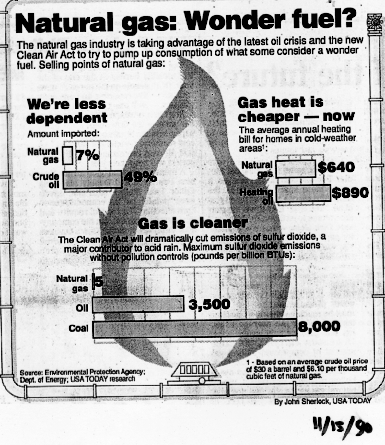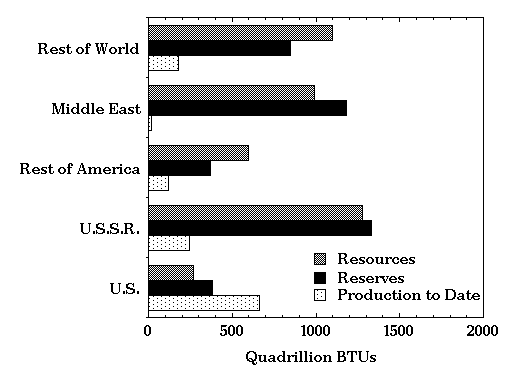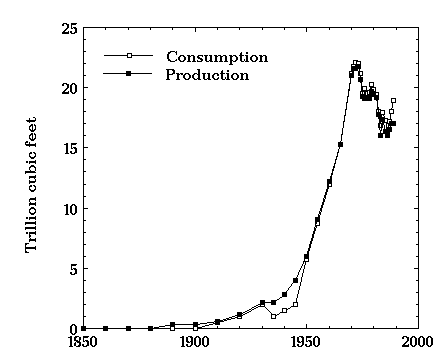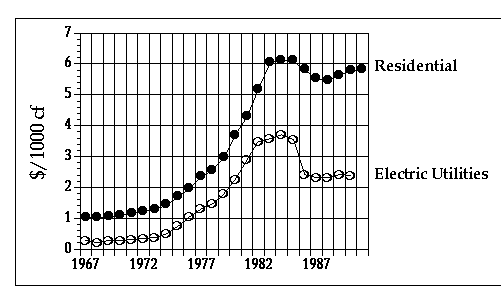

It's just too bad that natural gas is not as abundant on Earth, and in the U.S. in particular, as coal is. This fact is illustrated in the following graph.

For example, the U.S. proven reserves are seen to be about 380 quadrillion BTU. Compare this number to the current consumption, which is about 20 trillion cubic feet per year (or 20 quadrillion BTU per year), as illustrated below.

If current consumption trends continue, these proven reserves will be exhausted within the next two decades! For the most recent estimates of natural gas reserves in the U.S., check with the Department of Energy.
If you do that, you will see that the 1994 estimate of proven reserves is down to less than 200 quadrillion BTU, or less than a decade worth of consumption. You wouldn't conclude that the situation is so critical from the analysis of prices of natural gas in the recent past, shown below. (The DOE data for 1992 (latest year available) are $5.89 and $2.36 for the residental and electric utility consumers.)

Obviously, whoever is in charge of worrying about future natural gas supplies must be very confident (or too confident?) that the new discoveries of natural gas will invalidate the simple (and troublesome!) back-of-the-envelope calculations shown above.